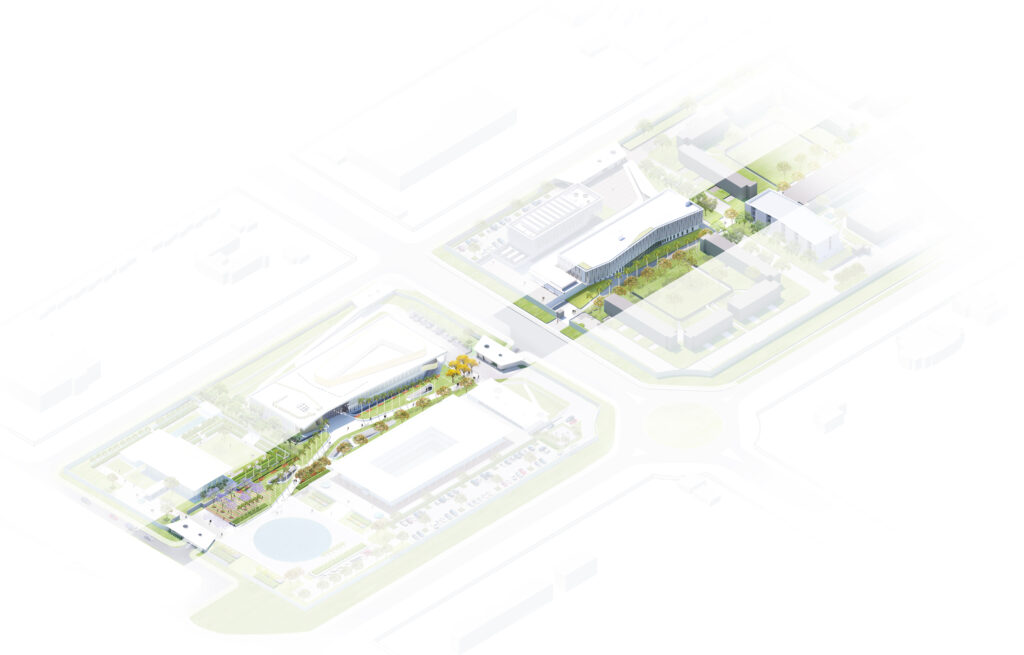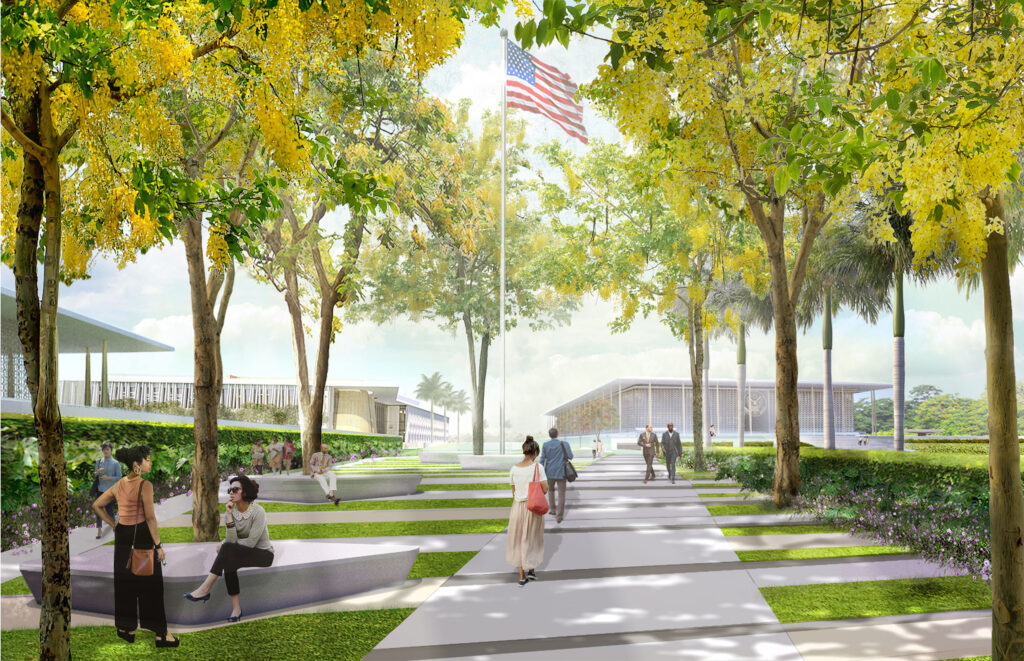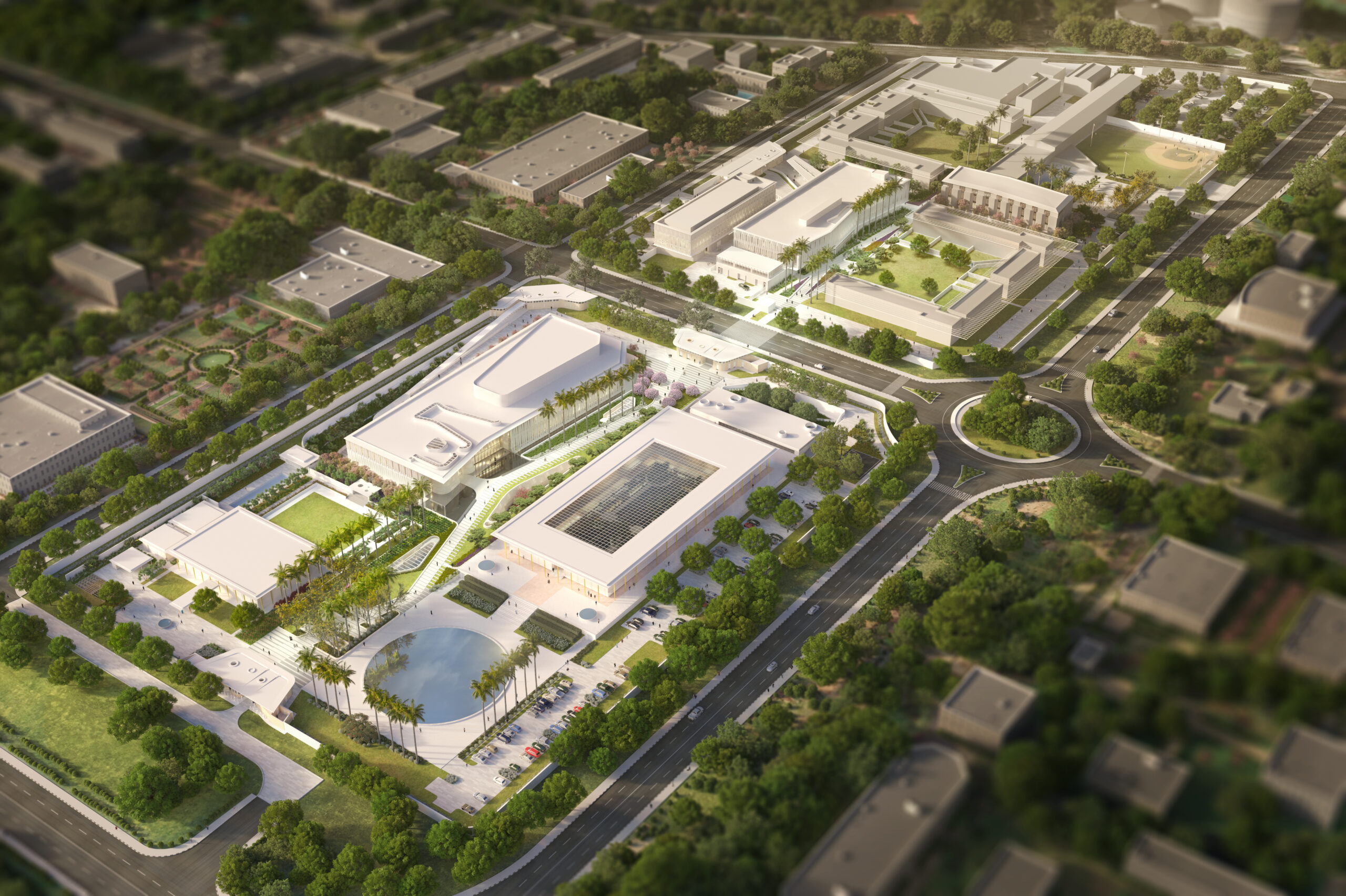
A New Vision for the Embassy
This is a highly symbolic and very important arrival. To walk around the pool, ascend to the plinth, be framed by the incredible seal. All of this was about setting a stage literally and figuratively for diplomacy.
Marion Weiss, Co-founder Weiss/Manfredi
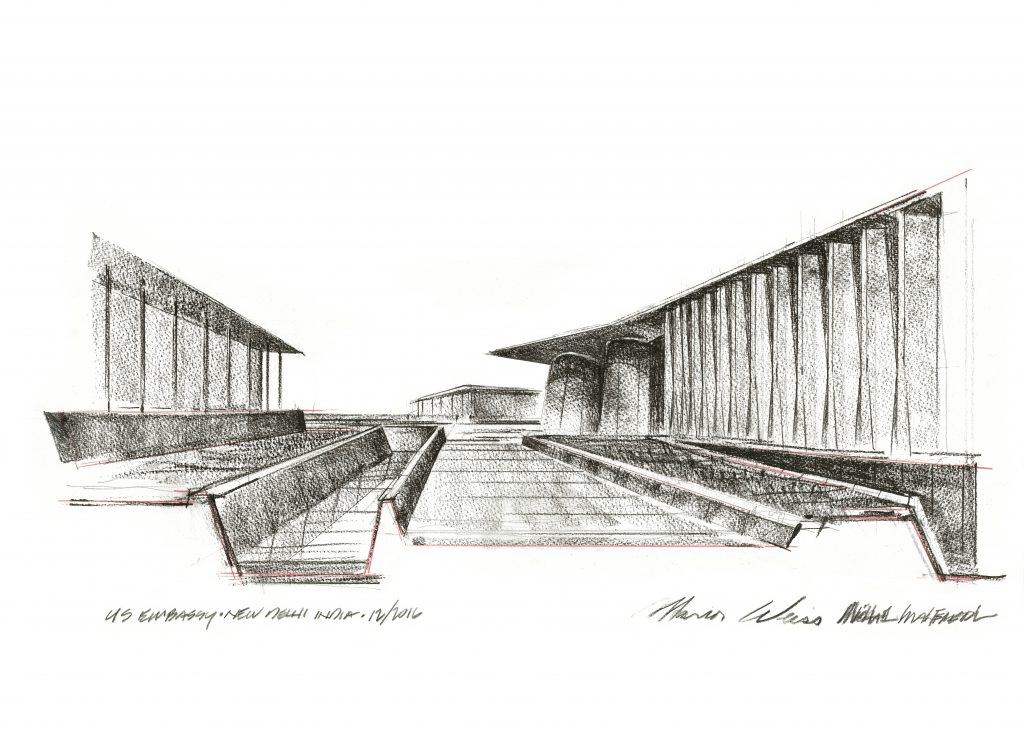
The new design recasts the 28-acre campus, presenting a new stage for diplomacy in the twenty-first century. It builds on research on traditional Indian architecture and landscape while also considering the Embassy’s current needs for space, security, and sustainability. In Edward Durell Stone’s vision, the Embassy was characterized by distinct, temple-like buildings set within a garden. To strengthen the connections between buildings and between the two blocks of the campus, Weiss/Manfredi envisioned a garden promenade, the new Central Green. A wide, linear garden path at the heart of the campus, the path is lined with royal palms, flowering Delonix trees, and other indigenous plantings. The Central Green provides each historic and new building with an address within an interconnected campus.
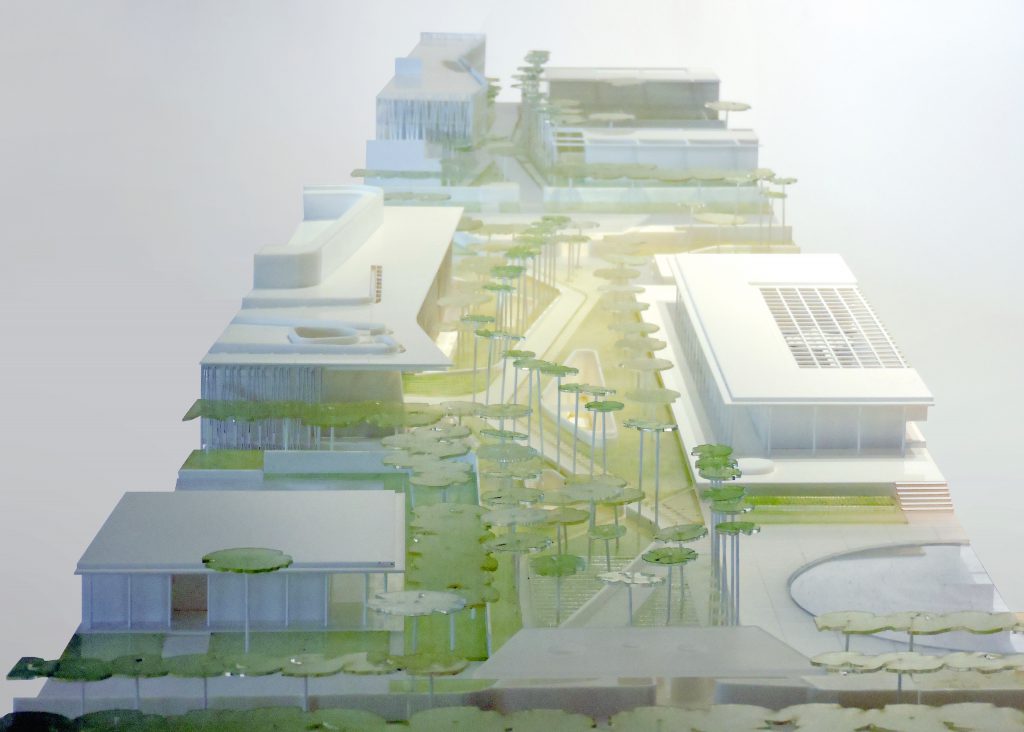
A walk down the Central Green reveals the series of new structures, each sharing a common architectural language of interwoven stone screens, extensive stone walls, and canopies. Once through the main entrance pavilion, the Central Green leads one to the historic reflecting pool and Roosevelt House, which are improved with new support buildings and service pavilions. Within the Central Green, a winding stone path reveals each building on the oblique. The historic Chancery is seen in a new light, approached from the side rather than from the center.
The screened facades of the new buildings angle in relationship to the stone path: like folding garden trellises, the screens organize exterior space. The landscape strategy also brings a vertical dimension to the site, with sunken gardens that illuminate office passages underneath the landscape. Rounding at the perimeter and guiding circulation on the Central Green, the stone walls create an expressive geometry throughout the campus.
Continuing down the path, a new Chancery building is located directly across from the historic Chancery, creating a dialogue between the two buildings. The new Chancery offers three levels of office space and consular services for the public. Further down the path, new residential facilities and a second new office building, the Support Annex, broaden the functionality of the Embassy. The desire to retain and celebrate the Embassy’s existing structures while updating the campus for twenty-first century requirements creates unique conditions for each new building.
REFLECTING POOL
The new design for the reflecting pool eliminates the use of potable water and reduces overall water use throughout the campus. Capturing storm water, the pool is sponge-like during the monsoon season, storing one million gallons of water for treatment and reuse in a below-grade cistern. Like traditional stepwells of India, the pool is designed to run for a majority of the year but will be empty in dry seasons. In the absence of water, the polished surface continues to create a reflection of the Chancery, maintaining Edward Durell Stone’s vision while adapting to current environmental conditions.
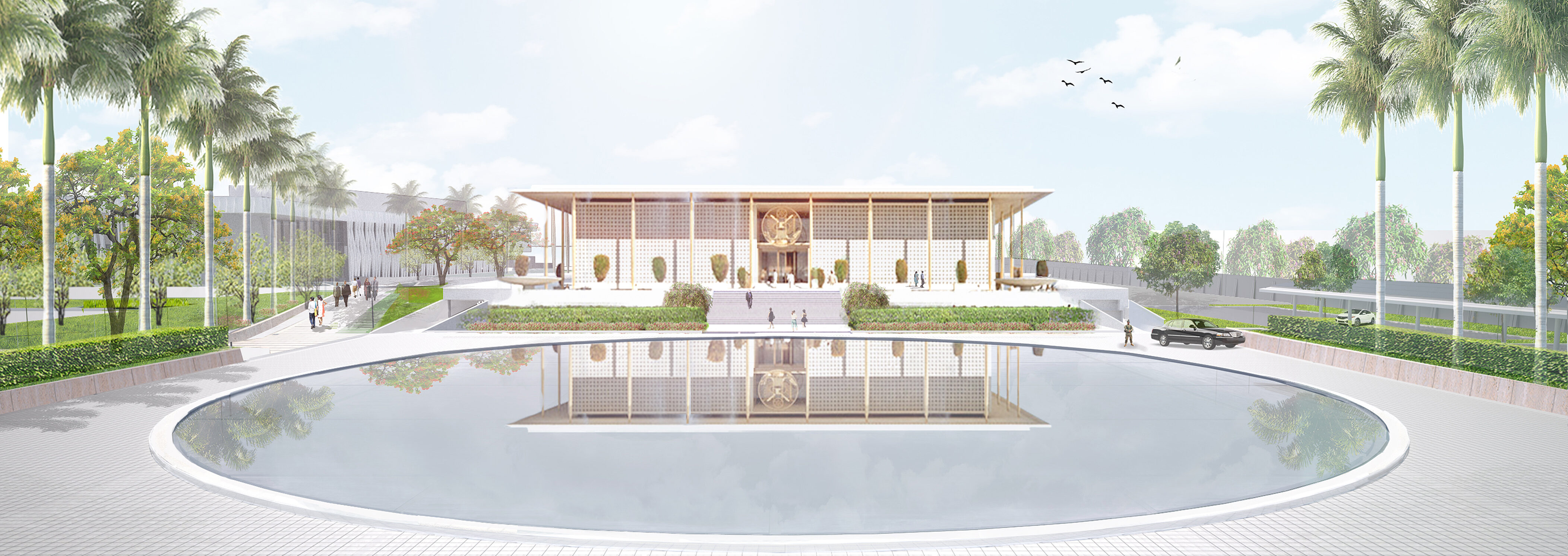
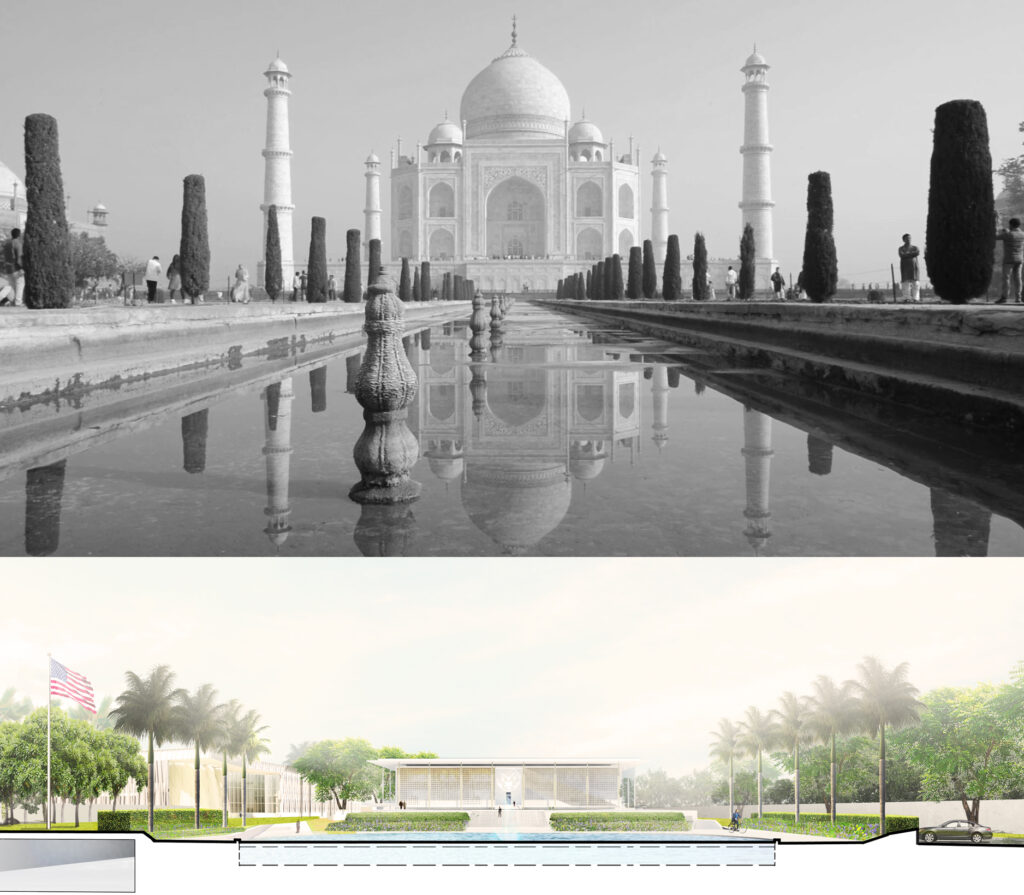
left / above Inspiration for the Chancery building came from the Taj Mahal: reflecting pools, avenues of trees, a podium as a base, delicacy, and richness of texture. left / below The cistern below the reflecting pool.
A REVITALIZED LANDSCAPE
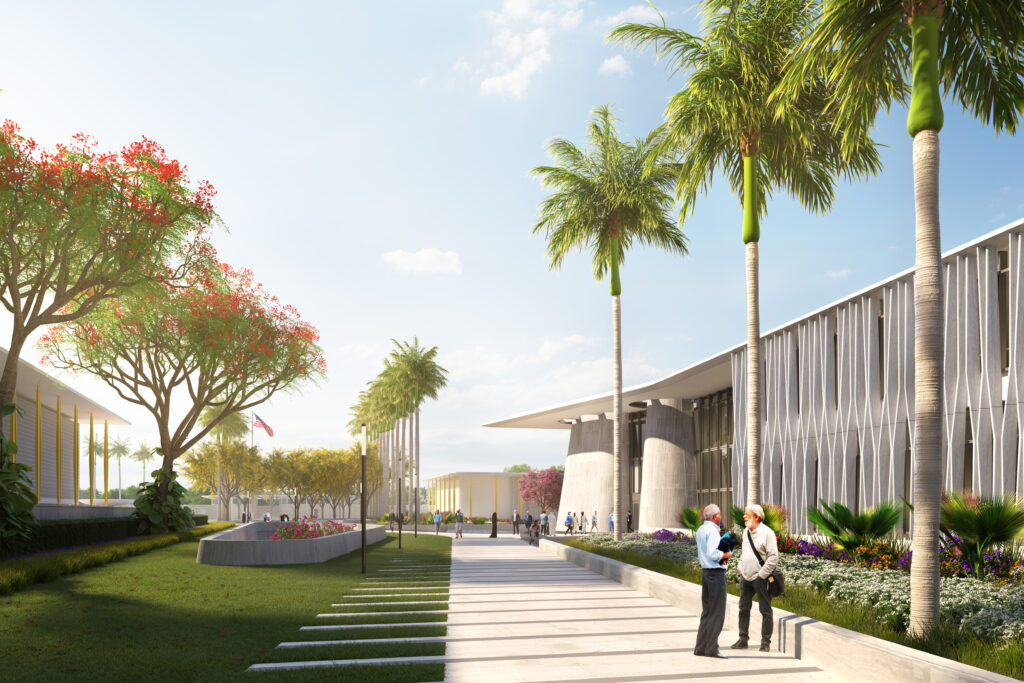
In Indian architectural traditions, the garden is a major protagonist. The new Embassy landscape is saturated with the deep reds of flowering Delonix regia trees, the purple of Ruellia shrubs, and warm green palm fronds. Along the path, stone pavers and grasses braid together to soften the edge between hardscape and softscape. Over 400 new trees help to clean the air by absorbing pollutant gasses and filtering particulates. Titanium dioxide coatings on the building façade elements will also help remove particulates from the air. Drought-tolerant plants reduce the impact on water consumption.
Stone Walls
The Embassy houses a range of activities; some spaces are ceremonial, while others are utilitarian. Site walls, a necessity of Embassy security, are also an opportunity to create a sense of protection and tranquility through placement of generous gardens. Starting from the perimeter, access pavilions draw visitors inside the Embassy campus with curving walls that gently suggest an inward flow of movement.
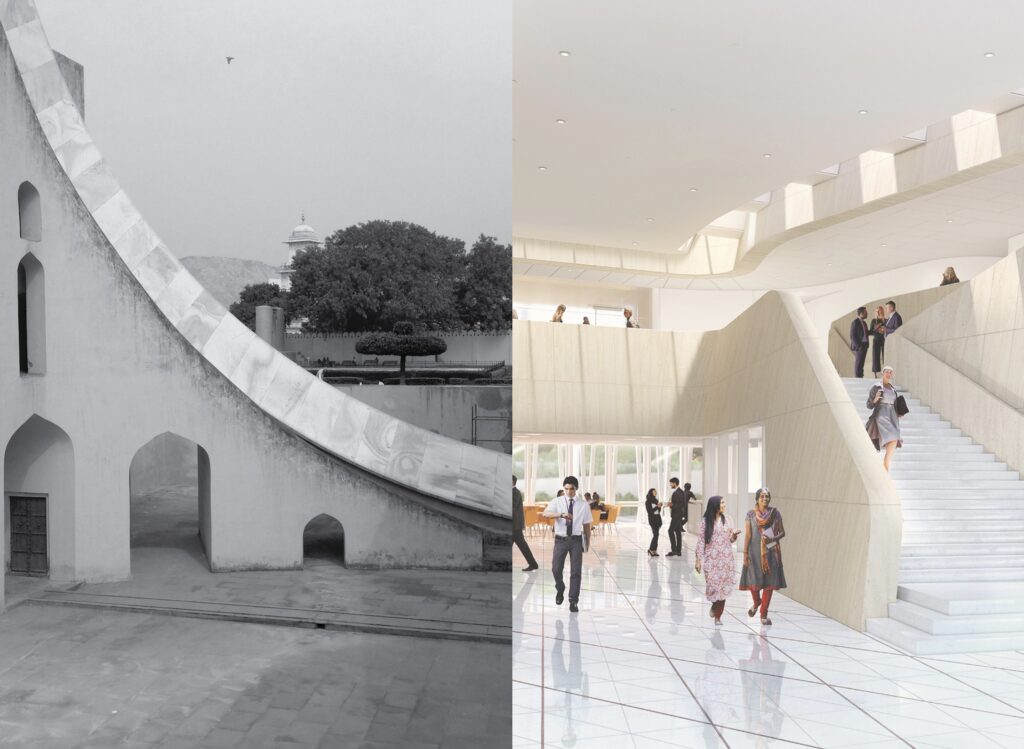
Once inside, the garden walls define a series of Embassy zones and create a procession of experiences, drawing from traditional Indian fortifications such as the Agra Fort and Fatehpur Sikri. The rounding or angling of the stone walls at key points introduces a soft and inviting geometry to the Embassy campus. Stone walls also extend from outside to inside buildings, drawing together architecture and landscape in a uniform language.
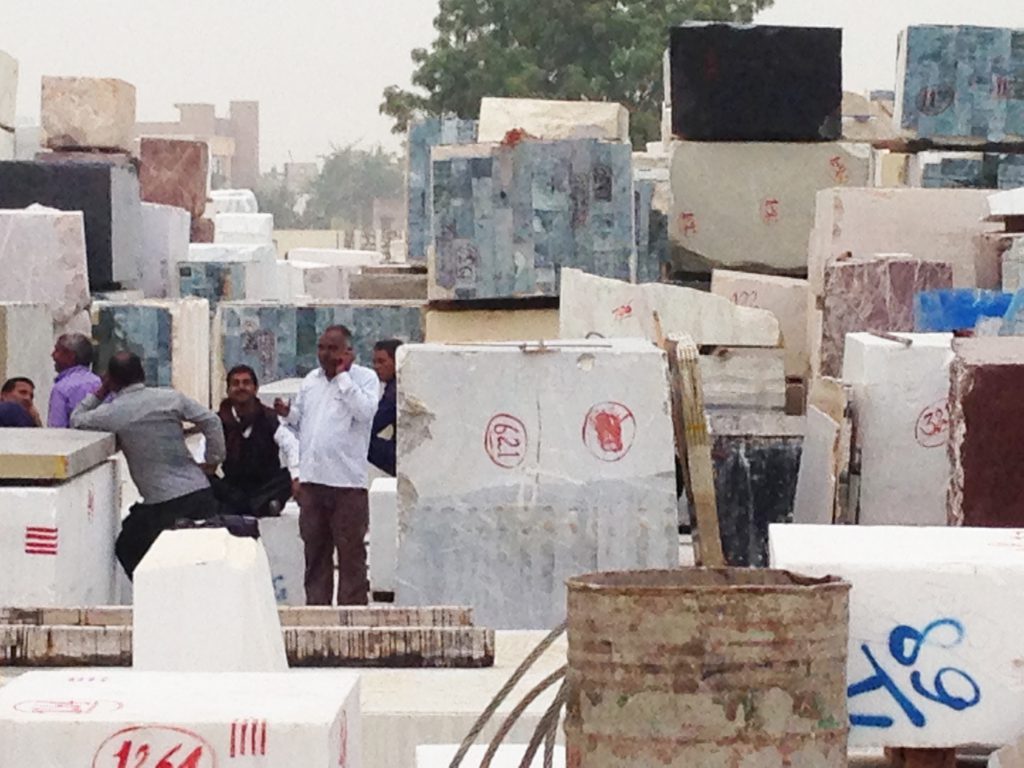
The new Embassy features a large amount of locally-sourced stone, including Kota limestone, Golden Teak sandstone, and Ambaji white marble. Along the Central Green, the walkway is a banding of two shades of granite and a sandstone, all sourced in India. At the Campus Access Pavilions, Golden Teak sandstone gives the walls a warm hue. The extensive use of Indian stone in the new buildings and landscape reduces the heavy environmental toll of transporting materials across continents, while also connecting the buildings and walkways to the local context.
ARRIVAL PATH AND NEW CHANCERY BUILDING
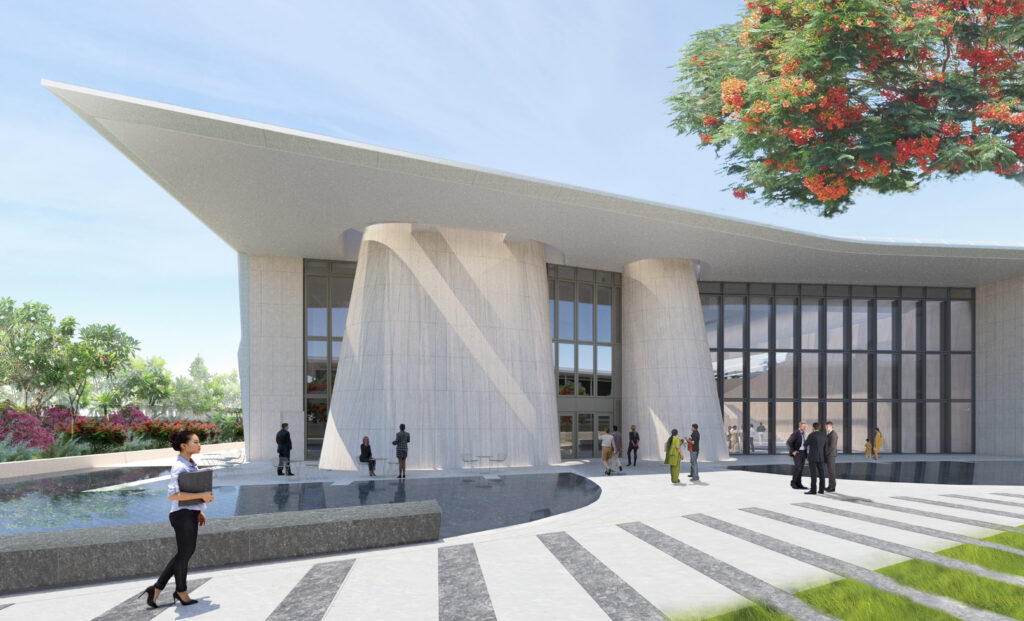
A shallow pool at the arrival of the new building continues the use of water on the Embassy campus to create a tranquil, reflective space. Walking on the bridge across the pool to the entrance, the air is cooled by the canopy’s shade and evaporating water. The location of the arrival plaza at the ground level, rather than up on a podium, increases the accessibility of the main entrance.
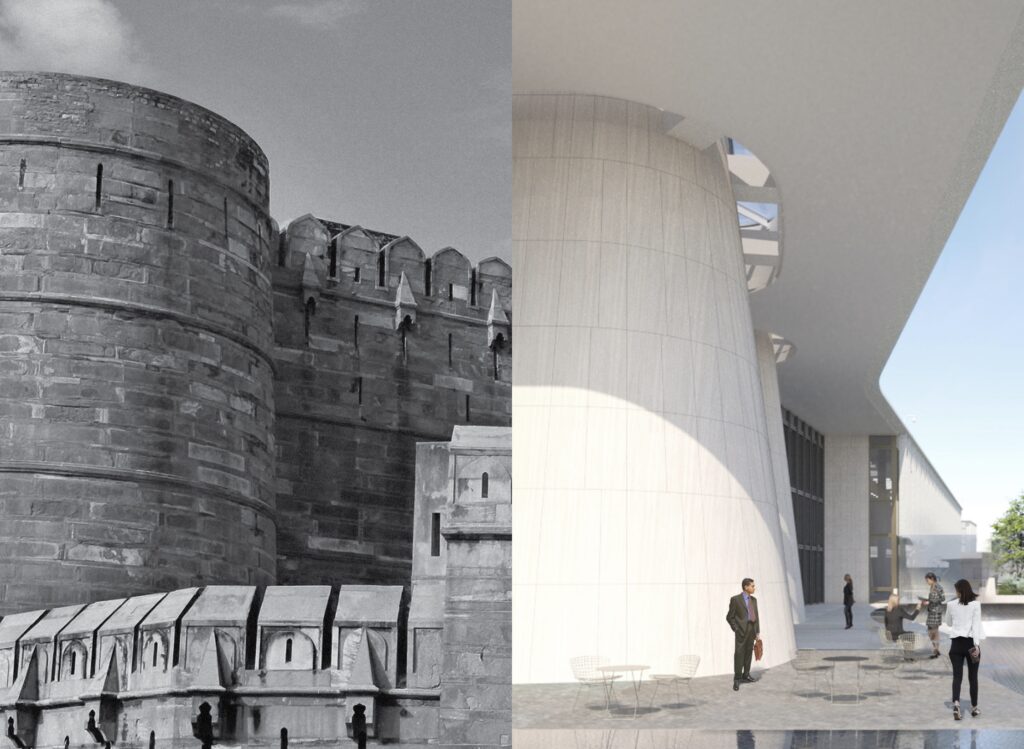
Curved stone drums frame the building’s entry. Although the drums reference Indian fortifications such as the Agra Fort, which traditionally present a defensive stonewall front, the new Chancery creates a sense of openness with an expansive glass façade. A series of canopies offers new connections to both the history of the Embassy and the greater Indian context. The deep overhang of the roof creates a dramatic canopy over the entrance and responds to the historic Chancery across the way.
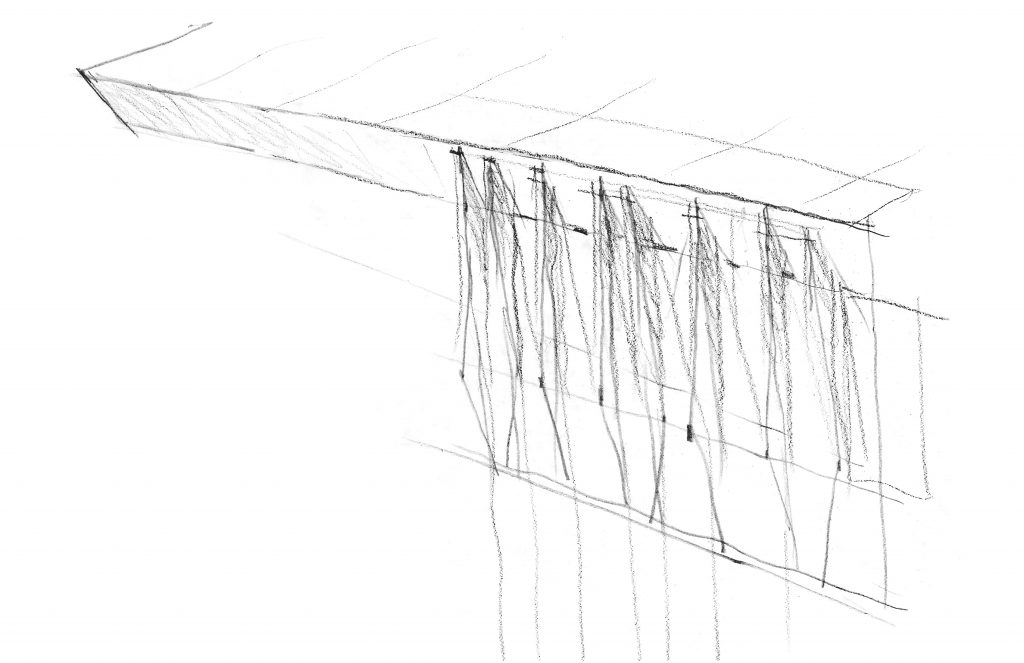
Several other canopies, such as the shade trellis along the garden wall of the Roosevelt House and canopy roofs of the entrance pavilions, signify a meeting place and enhance the functionality of the outdoor areas. The canopies produce patterns of light and shade, both animating the ground with shadow and diffusing the intensity of the subtropical sun.
NEW CHANCERY BUILDING LOBBY AND GALLERY
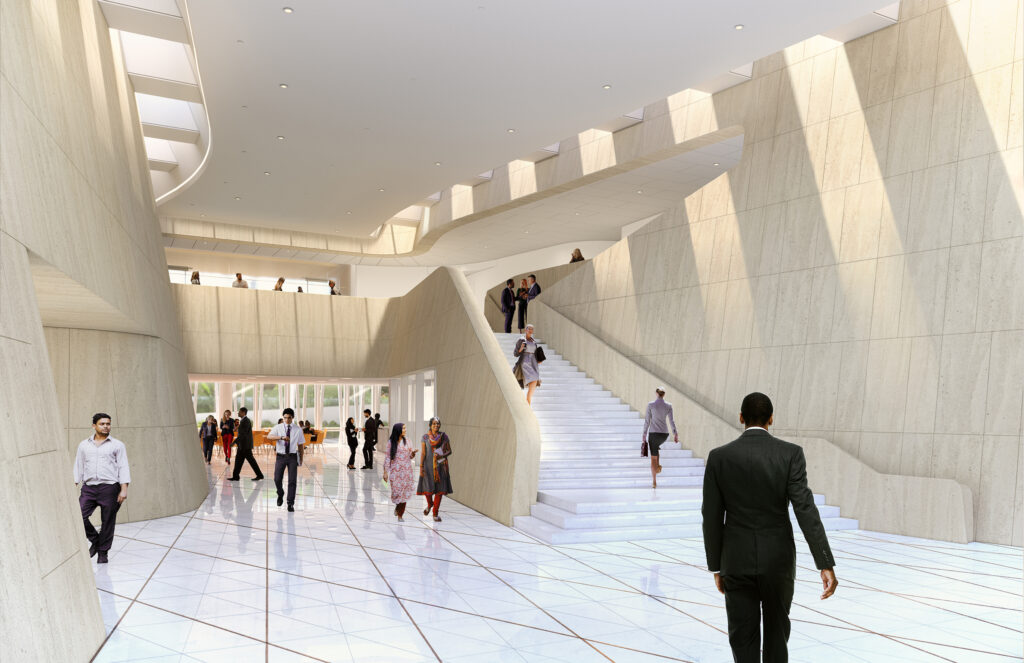
From the lobby, one enters the gallery—the central circulation space of the building. A gathering space and area for visitors, the gallery contains art installations by Indian artists and a café. Set on the same level as the outdoor plaza, the stone-clad gallery welcomes light and landscape into the building. The gallery continues the procession to the ambassador’s office with a monumental stair flanked by curving stone walls.
The full story of the new embassy design is available in the New U.S. Embassy New Delhi Design Book.

